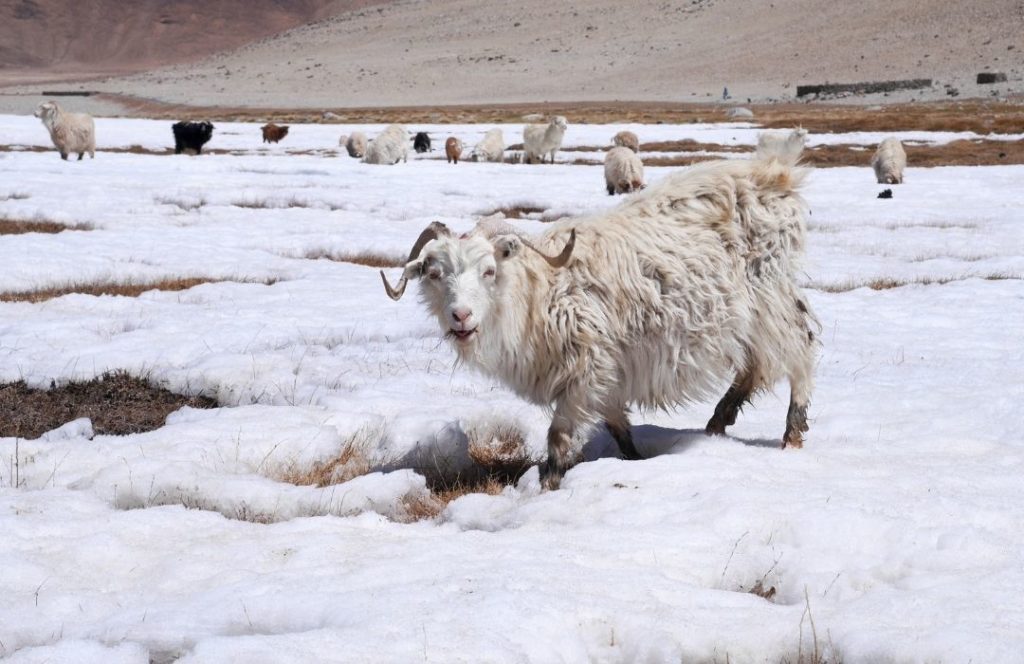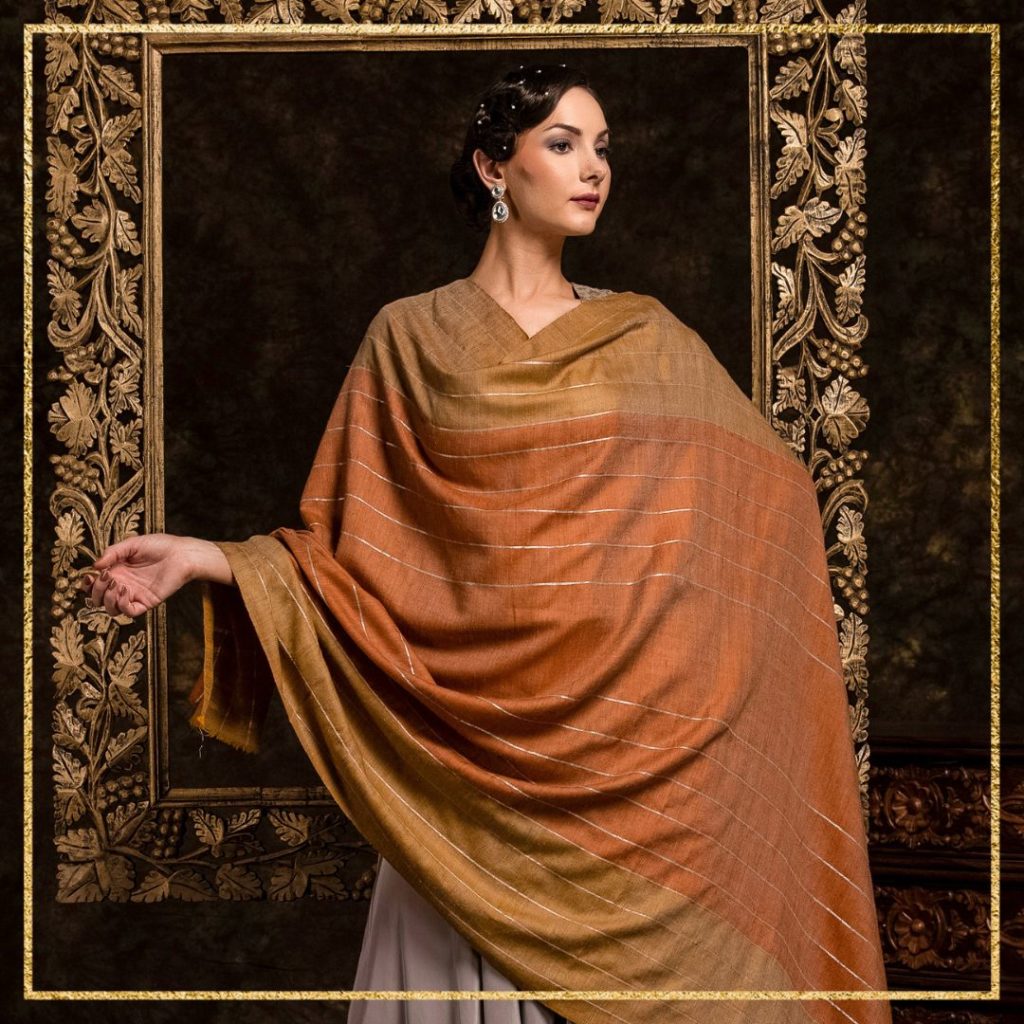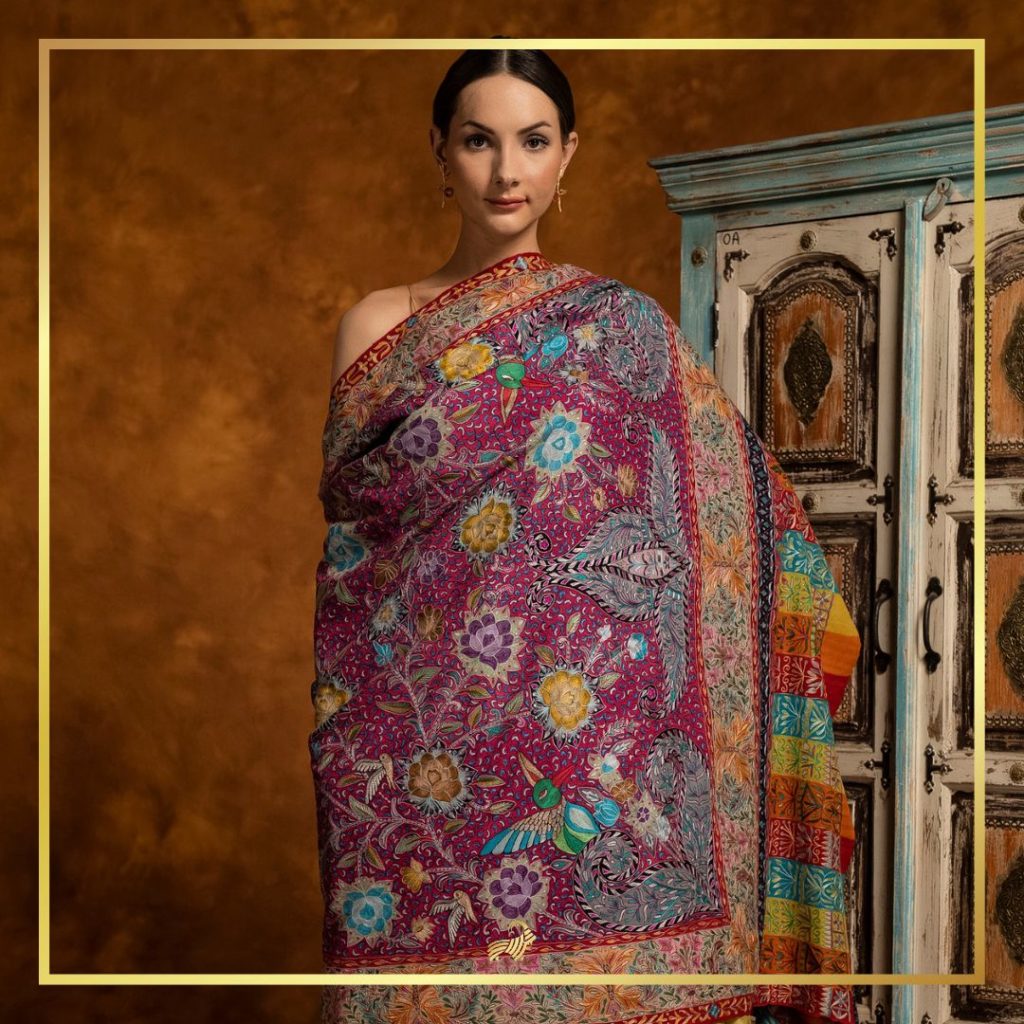Kashmiri shawls are undoubtedly one of the most hallowed and prized wrap accessories in the world. These are manufactured in Kashmir valley, North India, by the most skilled artisan community, who have experience for decades. Artisans handcraft primarily two types of Kashmiri shawls, Shatoosh or Pashmina, which are famous all over the world. Other than these, Kashmiri shawls can be made from sheep wool, and embellished in immensely beautiful local embroidery patterns. From their inception centuries ago, Pashmina and Shahtoosh shawls spread their wings around the world, and Europeans couldn't help but export these in large quantities.
How are Kashmiri Shawls made?
Kashmiri shawls, made from any material, are made in a distinctive manner and the weaving technique is unique. However, the shawls vary on the basis of the material used, the time taken, and the efforts involved.

World famous for their classic design, lightweight and sumptuous touch and feel, Kashmiri shawls that are the most famous are Pashmina shawls. These are made from the finest grade of Cashmere wool, that is found in the Ladakh region. It grows as a down fibre to the Capra hircus which is found in the Himalayas. Kashmiri Shawls are used synonymously with Pashmina shawls, as Shahtoosh is banned, and sheep wool shawls are not adored much.
The making of Kashmiri shawls (or Pashmina shawls) is a year or a few months long manual process, carried out by hundreds of artisan families. While the women in the family are concerned with one process, men take up those activities which include more physical work. As such, one pashmina shawl gets prepared by different members of the same family, and therefore artisans call it the result of love, care, and many emotions, and not just the fibre.
Making of Kashmiri Shawls
When we talk of Kashmiri shawls, we mean Pashmina shawls. This is because it is these shawls that caused enthusiasm and excitement amongst art admirers around the world. The other Kashmiri shawls are shahtoosh, which is banned, and raffal shawls, which are not considered of a quality as high as that of Pashmina. Shahtoosh comes from the hair of the Tibetan antelope, which is unfortunately killed to acquire its wool. On the other hand, Pashmina-bearing goats are domestic animals, and hence do not need to be forced to give away their produce. Therefore, it is Pashmina that we will be discussing in this blog.
Pashmina shawls are made from high-quality, fine animal hair that grows as a down fibre to a Ladakhi goat. The goat is found in the Changthang area of Ladakh and grows fine hair in the winter season to protect itself from the freezing temperature around. But as soon as Spring arrives, the goat loses this hair, which is collected by its herders. It is packed and sent to Kashmir for processing.
Also read: WHAT IS KASHMIR PASHMINA?
Processing in Kashmir
In Kashmir, the wool is cleaned and sorted according to quality. In fact, only the finest Cashmere threads are used for crafting Pashmina shawls. These are spun, post-cleaning, over a wooden spinning wheel, which demands immense attention from the spinner. These are the womenfolk of the valley, who spin the threads with a perfect rhythm of their hands and the fibre. A small mistake, and the yarn can break, as it is flimsy, gossamer fine, and immensely delicate.

Spinning converts lumps of Cashmere to fine yarn, which is ideal for weaving. Men of the family take the responsibility of weaving and mounting the yarn over a handloom. For a period of 3 to 4 days, the yarn is continuously woven by 1 or 2 men in perfect synchronization, which results in the formation of the luxury Pashmina shawl.
The shawl is complete and is still plain, and unembellished. More artisans are required to embellish it and make it full of colours, adornment, and ornamentations.
Types of Kashmiri Pashmina Shawls
On the basis of what ornamentation it features, Kashmiri Pashmina shawls are of the following types.
Solid Pashmina Shawls

Solid shawls are plain with no ornamentation. Post weaving, these are sent for finishing, where their fringes are cut, and foreign material is cut or removed might have gotten attached to the handloom, washed, and ironed properly. These are then packed and sent for sale.
Printed and Patterned Kashmiri Shawls

Post finishing processes of the solid shawl, Pashmina shawls can be sent to printing or patterning. Common prints include animal prints, floral prints, paisley prints, and even customized prints required by the customer. Patterns can be checkered patterns, stripes, tartans, and more.
Embroidered Pashmina shawls

Embroidered shawls are the most famous shawls when it comes to the produce from Kashmir. Since these shawls are fine and delicate, only hand embroidery can be endured by them.
Primarily, there are three types of hand embroideries done on the Pashmina shawls of Kashmir. Sozni Kari, Papier Mache Embroidery, and Tilla Dozi are the exquisite embroideries that Pashmina shawls feature. This makes them alluring to the eyes and immensely complacent to wear.
Kani Pashmina Shawls of Kashmir

Kashmiri Kani shawls are the most popular in the world. These are the most intricate and complicated to craft, and take years to complete. It was the Kani shawl of Kashmir that impressed Empress Josephine of France and she invested in several hundred Kani shawls. This led these shawls to become the most stylish accessory and grow in fame even more.
Also read: WEARING A MASTERPIECE OF KANI PASHMINA
Lace Pashmina Shawls
Some solid Pashmina shawls are adorned with French Chantilly laces and given a pretty feminine touch. Laces can be hand stitched around the borders or even in between the weave. These dainty pieces look amazing on a bride if the wedding falls in the colder months.
Reversible Pashmina shawls

Reversible shawls are nothing less than magic. These masterpieces look the same from the front and the back and can be worn from both sides. Some artisans advance further and give different colours to both sides.
A luxurious and more extravagant version of plain reversible shawls is the embroidered reversible shawl. In this shawl, the embroidery looks neat on both sides. There is no back portion of these shawls which has to be hidden, and hence the owner gets two shawls in one.
It is the Pashmina shawls of Kashmir that rule the world in terms of luxurious accessorizing. Be it any variety of these shawls, all look grand and opulent in their own ways. This makes those, who wear it for the first time, absolutely stunned by its touch, feel and appearance.
Also read: KASHMIRI SHAWLS : A WINTER ESSENTIAL